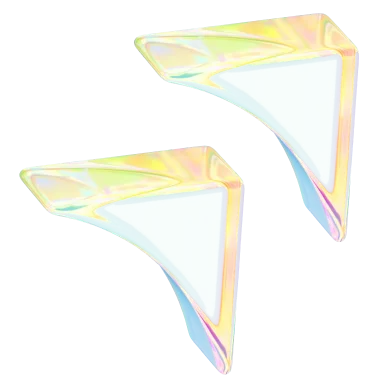Digital Portfolio: What Is It & How to Make One in 7 Steps 📌
- Remote Working & Freelancing

Here’s how to make a digital portfolio to maximize your online presence, including why you should, what to add, and how it works.
Attention creators: If you don’t have a digital portfolio, you’re missing out! As the world becomes increasingly online, having a portfolio that can be seen by any potential client anywhere, anytime, is crucial to success.
That’s the power of digital portfolio websites — they help you stand out when you need to the most, making them one of the most underrated tools in a creator’s arsenal. From selecting the best work samples to spinning a compelling narrative, we’ve got the inside tips to help you succeed.

What is a digital portfolio? 💻
Having a strong online presence is more important than ever, and for freelancers, that includes creating an impressive digital portfolio. A round-up of your education, skills, and experience, a digital portfolio is an online collection of your best work and achievements.
Digital portfolios can include various media, from high-quality images and videos to writing samples and project links, depending on your specialization or area of expertise. They’re a great tool for reaching (and impressing) potential clients and formalizing a professional presence on the web. A creative digital portfolio presents a well-curated selection of your best work and highlights your strengths, helping you stand out in a competitive job market.
Who can benefit from a digital portfolio? 🔥
No matter what type of work you do, a well-crafted digital portfolio is vital to boosting your career. Whether you’re a writer, photographer, designer, or a hybrid of any or all of the above, it can be a game-changer for growing your network and finding new opportunities. Here are a few examples of professionals who can benefit from digital portfolio websites:
- Writers showcase their best articles, copywriting, blog posts, or creative writing, highlighting their style, voice, and expertise.
- Photographers display their best images, highlight their unique style, and showcase their skills to potential clients.
- Designers demonstrate their graphic design skills and experience, share their creative process, and showcase past design projects and relevant client feedback.
- Social media creators highlight their brand collaborations, social media campaigns, influencer work, and content creation skills.
- Developers demonstrate their coding skills, development projects, and technical expertise.
How to make a digital design portfolio 🚀
If creating an eye-catching digital portfolio seems daunting, don’t worry — it’s not as complicated as it might seem. With the right tools and advice, it can be enjoyable and rewarding without tons of hard work or a lot of time spent. Here are a few steps to follow to curate a great experience for potential employers and recruiters:
1. Create a website
To get started, create a website. Use a website builder to create a website quickly and easily — no coding is required — and a tool such as Canva for creating images. Even easier, Contra’s new Portfolios allow you to import the information from your Contra profile into various templates designed especially for freelancers to create a stunning online portfolio fast.
2. Choose an attractive layout
Select a visually appealing layout that represents your own personal brand and style. Remember that a clean, cohesive, minimalistic design is often the most effective because it allows your work to take center stage (as it should!). If you have a logo or color scheme, incorporate it into the design.
3. Use categories
Separate your content into categories and place these categories in separate sections or on different pages. This makes it easier for visitors to navigate your portfolio and find the specific type of work they’re interested in.
4. Add your experience
Include your work history and accomplishments, such as any awards or accolades you’ve earned. Add your education, any skills relevant to your niche, and which programs you’re proficient in.
5. Include links to your social media
A good online presence is cohesive, so be sure to include links to Instagram, TikTok, Facebook, LinkedIn, and Twitter. Browsing your socials gives visitors a better idea of your personality, especially if you’re a social media marketer or content creator.
6. List your contact information
Be sure to remember this one! Make it easy for potential clients to contact you by listing your email address and phone number. Some professionals choose to include their addresses as well.
7. Update it frequently
Always add your latest work and accomplishments to keep your digital portfolio fresh. An outdated portfolio can be offputting to potential clients and colleagues.
4 elements to not miss💡
Now you know all that goes into creating a digital portfolio, but where exactly do you start? The following four elements are must-haves for effectively communicating your education, experience, work history, and style:
Biography
Include a short, exciting biography in your portfolio. Highlight work experiences, skills, and other relevant information to help potential clients get to know you better. Feel free to let your personality and sense of humor shine, but keep it professional.
Contact information
Add your email address and phone number to make it simple for potential clients to reach out to you.
“About me” section
Use this portfolio section to give an overview of your professional background, passions, and what drives you as a creative professional. Highlight any unique skills and experience, including what sets you apart from others in your field.
Work samples
When creating a digital portfolio, examples are essential. Depending on your profession, these could be anything from writing samples to design projects. Choose the projects you’re most proud of. These work samples should demonstrate your skills and expertise and be easy to navigate and visually appealing.
3 types of work samples to include
Adding the correct type of work samples to a digital portfolio is critical. These samples must demonstrate your skills, expertise, and experience in the best possible light, so choose wisely! To make a lasting impression, consider using the following types:
- Use recent samples. Add up-to-date work samples that reflect your current level of expertise. This gives potential clients the best sense of what you’re capable of.
- Add the strongest work first. Start strong to catch (and keep!) visitors’ attention.
- Include different types of work. Add a wide variety of work samples. This lets potential clients know you’re versatile and helps you appeal to a broader range of people.
Create a digital portfolio with Contra 🌟
If you’re looking to showcase your skills and experience online, Contra’s platform enables freelancers to showcase their skills and services and accelerate their independent careers with commission-free access to high-quality flexible opportunities. Portfolios by Contra give you everything necessary to launch, build, and grow your Independent career. The information in your Contra profile — including your work experience, services, and recommendations — populates your Portfolio with the click of a button.












